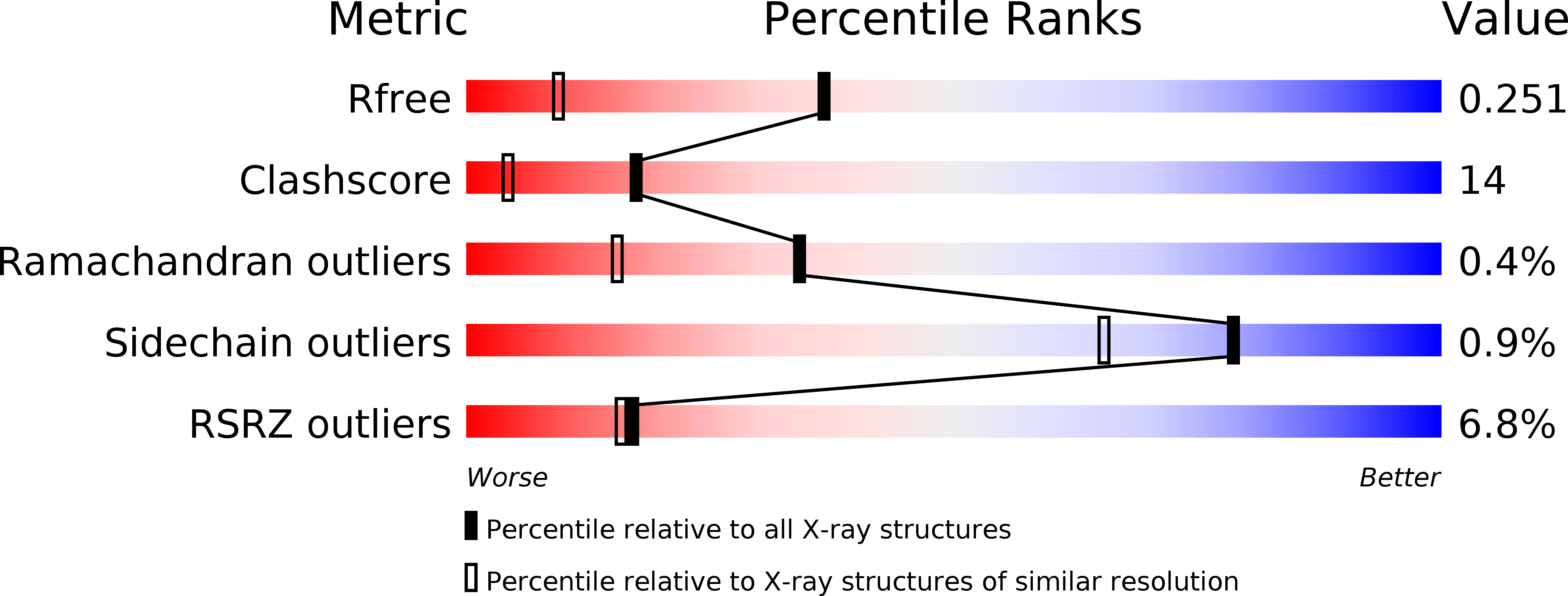Structural Conservation Between the Actin Monomer-binding Sites of Twinfilin and Actin-depolymerizing Factor (ADF)/Cofilin
Paavilainen, V.O., Merckel, M.C., Falck, S., Ojala, P.J., Pohl, E., Wilmanns, M., Lappalainen, P.(2002) J Biol Chem 277: 43089-43095
- PubMed: 12207032
- DOI: https://doi.org/10.1074/jbc.M208225200
- Primary Citation of Related Structures:
1M4J - PubMed Abstract:
Twinfilin is an evolutionarily conserved actin monomer-binding protein that regulates cytoskeletal dynamics in organisms from yeast to mammals. It is composed of two actin-depolymerization factor homology (ADF-H) domains that show approximately 20% sequence identity to ADF/cofilin proteins. In contrast to ADF/cofilins, which bind both G-actin and F-actin and promote filament depolymerization, twinfilin interacts only with G-actin. To elucidate the molecular mechanisms of twinfilin-actin monomer interaction, we determined the crystal structure of the N-terminal ADF-H domain of twinfilin and mapped its actin-binding site by site-directed mutagenesis. This domain has similar overall structure to ADF/cofilins, and the regions important for actin monomer binding in ADF/cofilins are especially well conserved in twinfilin. Mutagenesis studies show that the N-terminal ADF-H domain of twinfilin and ADF/cofilins also interact with actin monomers through similar interfaces, although the binding surface is slightly extended in twinfilin. In contrast, the regions important for actin-filament interactions in ADF/cofilins are structurally different in twinfilin. This explains the differences in actin-interactions (monomer versus filament binding) between twinfilin and ADF/cofilins. Taken together, our data show that the ADF-H domain is a structurally conserved actin-binding motif and that relatively small structural differences at the actin interfaces of this domain are responsible for the functional variation between the different classes of ADF-H domain proteins.
Organizational Affiliation:
Program in Cellular Biotechnology, Institute of Biotechnology, P.O. Box 56, University of Helsinki, 00014 Helsinki, Finland.














